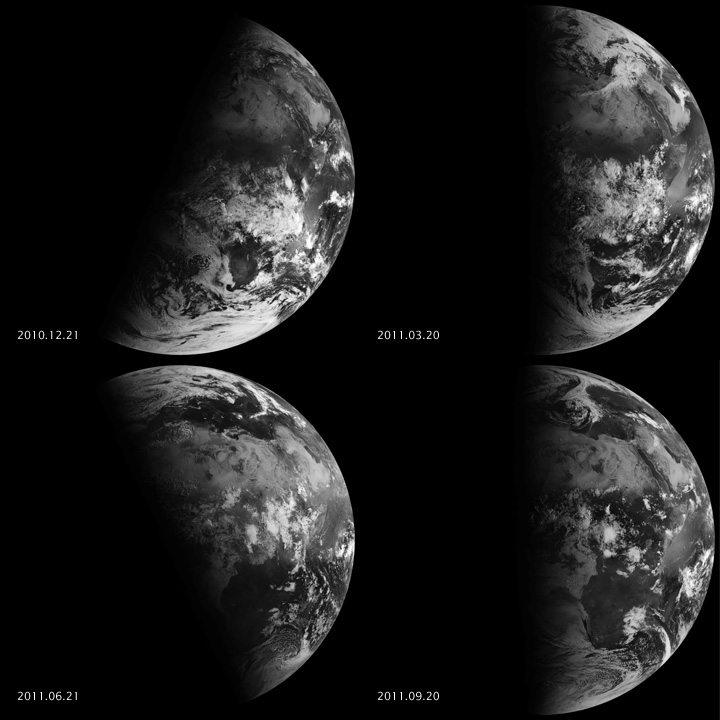Happy Equinox! It's the 1st Day of Autumn in Earth's Northern Hemisphere
It's spring now in the Southern Hemisphere.
Happy Equinox!
This morning (Sept. 23) at 3:49 a.m. EDT (0749 GMT) marked the official celestial beginning of autumn in the Northern Hemisphere.
Although beaches have long been closed in many parts of the United States and there's already been a meteorological shift from summer into autumn, today marks a special transition in which the sun crosses the celestial equator, or the projection of Earth's equator onto the sky, from north to south. While the north gears up for chillier days, the south is welcoming springtime.
Cultures around the world have celebrated this celestial shift in different ways. In Japan both equinoxes are national holidays known as Ohigan, in which people honor their deceased ancestors. In Mexico, tourists flock to view the descent of the feathered-snake god Kukulkán along the side of a Mayan pyramid in Chichén Itzá.
Related: Day and Night Are Perfectly Balanced in Spring Equinox Photo Snapped from Space

The word "equinox" means "equal night" in Latin, because this transitional day means the sun is directly over the Earth's equator. That means that any given place on the globe's surface will experience day and night of almost equal length. In most places, day will last longer than night because it doesn't account for twilight, when sunlight refracts as it passes through the atmosphere and illuminates the sky before sunrise or after sunset, according to timeanddate.com.
The seasonal changes are caused by the tilt of Earth's axis, an imaginary rod that goes through Earth's north and south poles. It's tilted about 23.4 degrees relative to the plane of Earth's orbit around the sun. During the equinoxes, the seasonal effect of this tilt is quite apparent at Earth's poles. On the September equinox, the sun finally rises over the horizon at the south pole, which hasn't seen sunrise since the March equinox six months ago. Meanwhile, the north pole braces for the long night until sunrise next year.
Get the Space.com Newsletter
Breaking space news, the latest updates on rocket launches, skywatching events and more!
- What Is the Summer Solstice? An Astronomer Explains
- How Do Flat-Earthers Explain the Equinox? We Investigated.
- December Solstice 2018! Satellites See the Seasons Change from Space
Follow Doris Elin Urrutia on Twitter @salazar_elin. Follow us on Twitter @Spacedotcom and on Facebook.
Join our Space Forums to keep talking space on the latest missions, night sky and more! And if you have a news tip, correction or comment, let us know at: community@space.com.

Doris is a science journalist and Space.com contributor. She received a B.A. in Sociology and Communications at Fordham University in New York City. Her first work was published in collaboration with London Mining Network, where her love of science writing was born. Her passion for astronomy started as a kid when she helped her sister build a model solar system in the Bronx. She got her first shot at astronomy writing as a Space.com editorial intern and continues to write about all things cosmic for the website. Doris has also written about microscopic plant life for Scientific American’s website and about whale calls for their print magazine. She has also written about ancient humans for Inverse, with stories ranging from how to recreate Pompeii’s cuisine to how to map the Polynesian expansion through genomics. She currently shares her home with two rabbits. Follow her on twitter at @salazar_elin.









